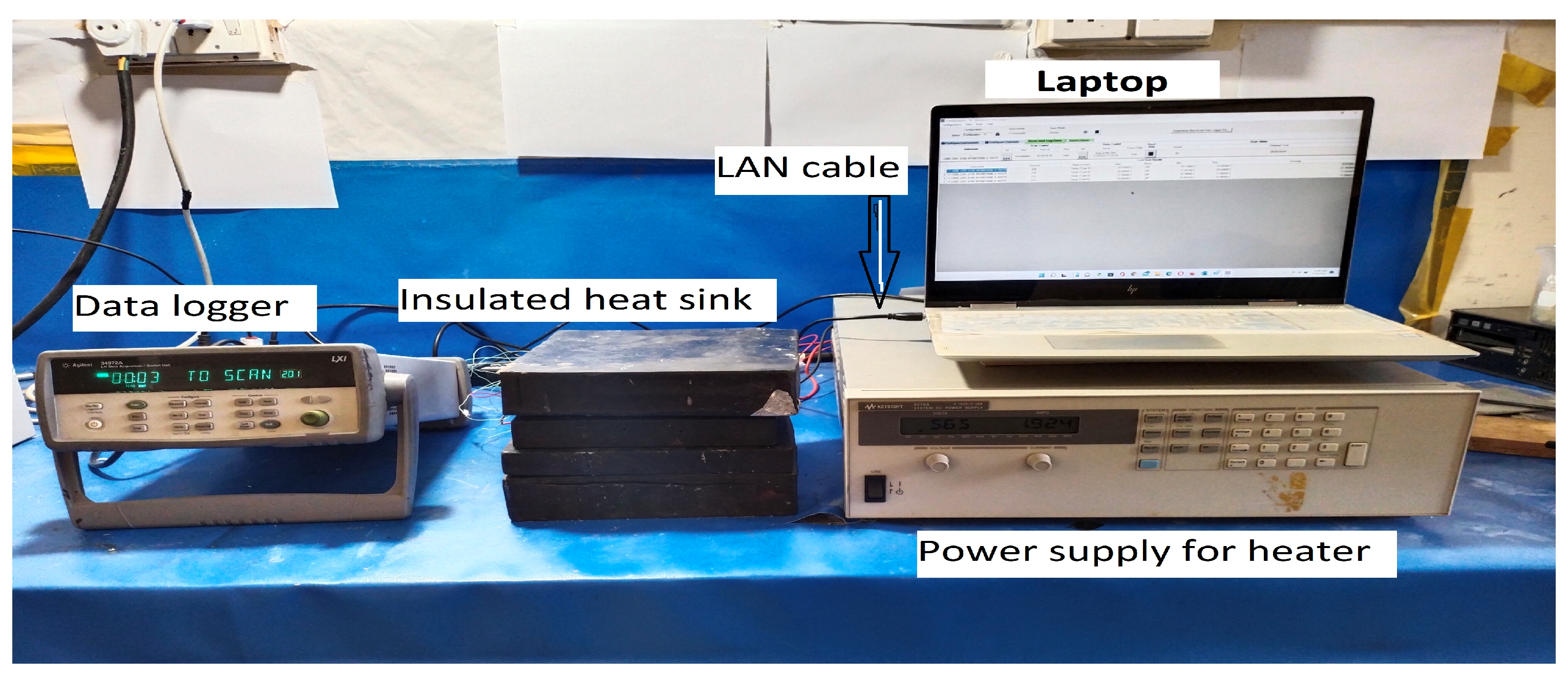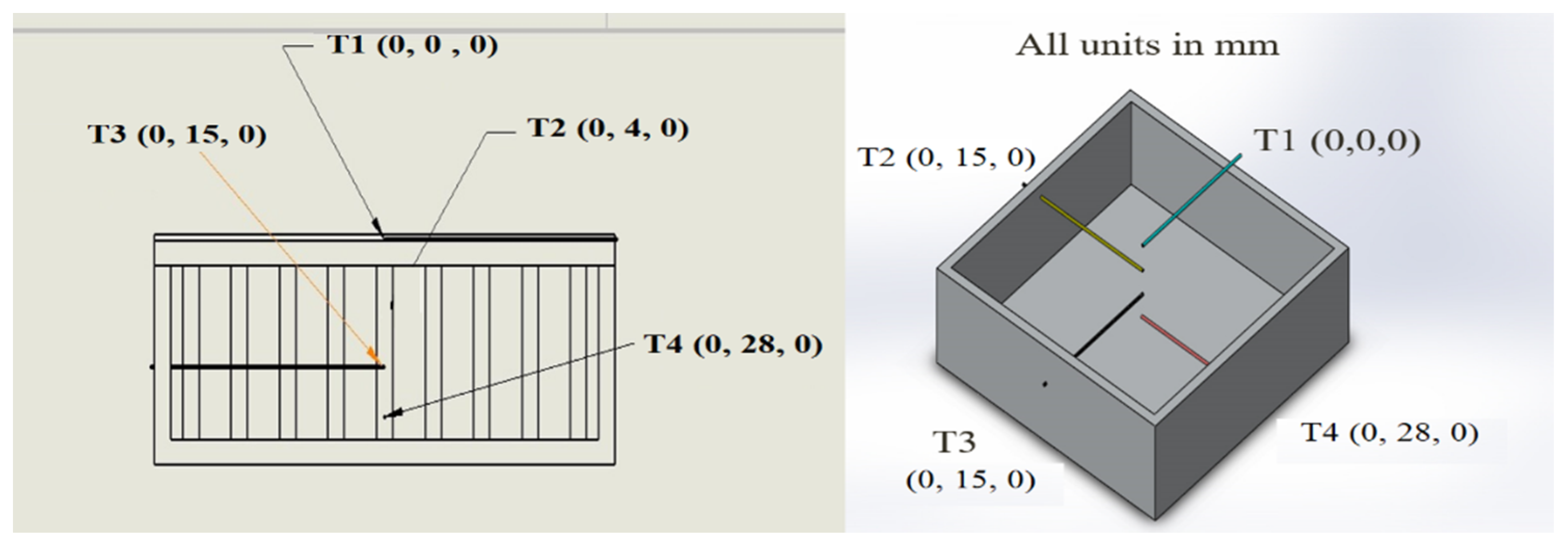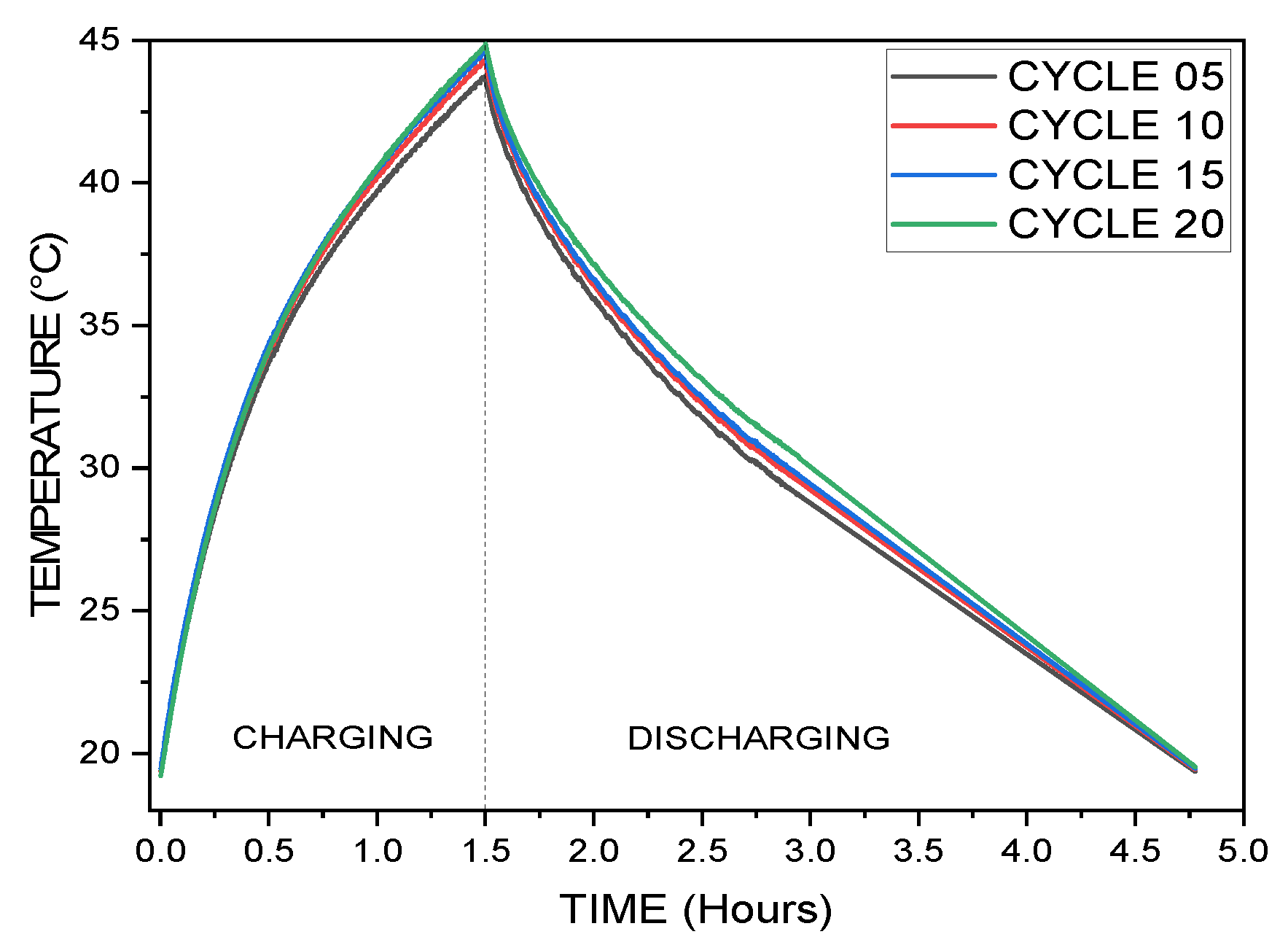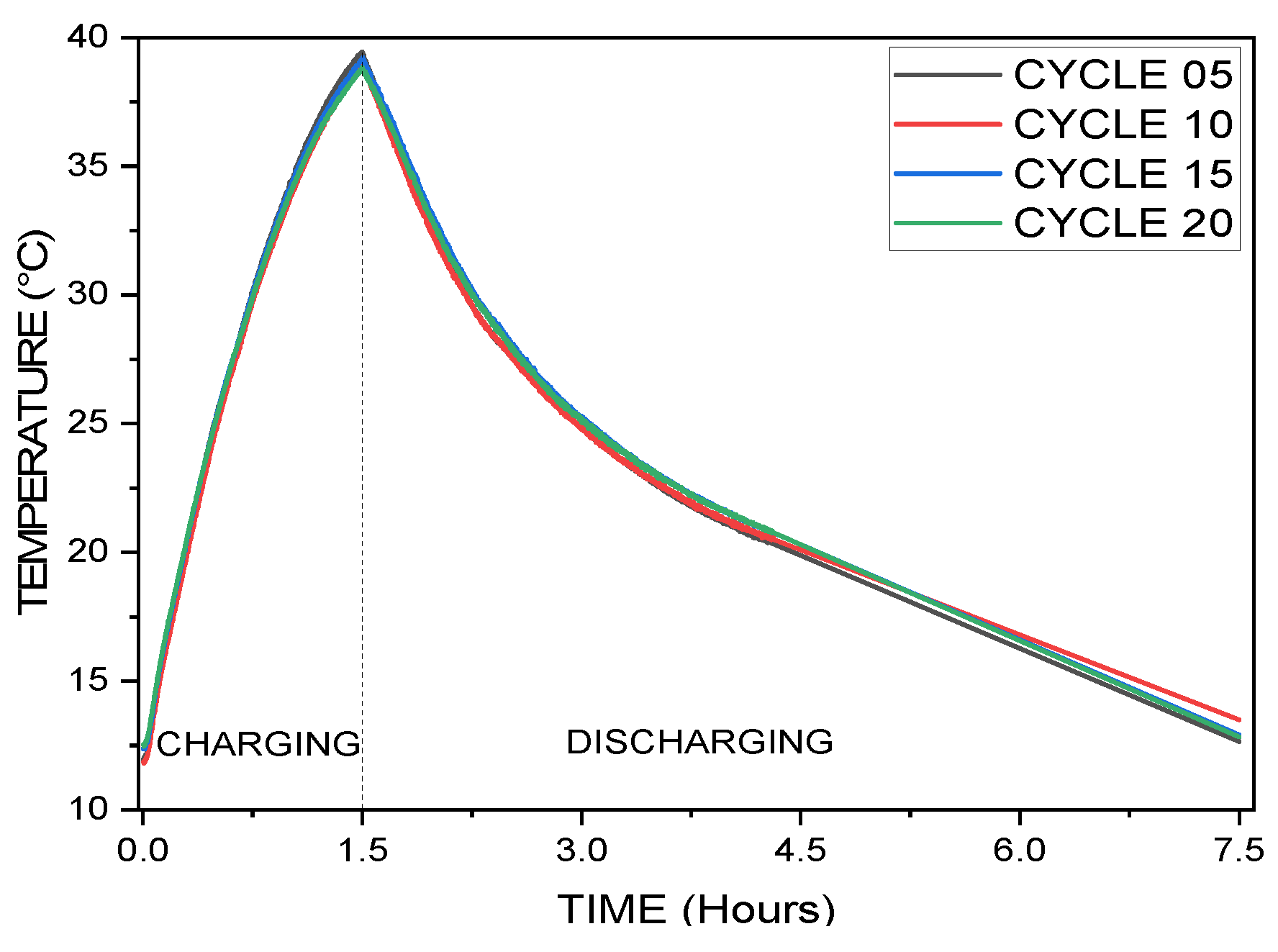Thermal Stability Analysis of a PCM-Based Energy Storage System †
Abstract
:1. Introduction
2. Experimental Setup
Thermocouples Position
3. Results and Discussion
3.1. Experimentally Calibration of the Heat Sink
3.2. Analysis of Thermal Stability of PCM-Based Energy Storage System
3.3. Analysis of Thermal Stability of PCM and Triangular Pin Fin-Based Energy Storage System
4. Conclusions
Author Contributions
Funding
Institutional Review Board Statement
Informed Consent Statement
Data Availability Statement
Acknowledgments
Conflicts of Interest
References
- Sharma, A.; Sharma, S.D.; Buddhi, D.; Sawhney, R.L. Thermal Cycle Test of Urea for Latent Heat Storage Applications. Int. J. Energy Res. 2001, 25, 465–468. [Google Scholar] [CrossRef]
- Rehman, T.U.; Ali, H.M.; Saieed, A.; Pao, W.; Ali, M. Copper Foam/PCMs Based Heat Sinks: An Experimental Study for Electronic Cooling Systems. Int. J. Heat Mass Transf. 2018, 127, 381–393. [Google Scholar] [CrossRef]
- Wang, T.; Almarashi, A.; Al-Turki, Y.A.; Abu-Hamdeh, N.H.; Hajizadeh, M.R.; Chu, Y.M.; Sodhi, G.S.; Muthukumar, P.; Arshad, A.; Jabbal, M.; et al. Compound Charging and Discharging Enhancement in Multi-PCM System Using Non-Uniform Fin Distribution. Therm. Sci. Eng. Prog. 2021, 18, 299–314. [Google Scholar] [CrossRef]
- Atouei, S.A.; Rezania, A.; Ranjbar, A.A.; Rosendahl, L.A. Protection and Thermal Management of Thermoelectric Generator System Using Phase Change Materials: An Experimental Investigation. Energy 2018, 156, 311–318. [Google Scholar] [CrossRef]
- Ali, H.M. Applications of Combined/Hybrid Use of Heat Pipe and Phase Change Materials in Energy Storage and Cooling Systems: A Recent Review. J. Energy Storage 2019, 26, 100986. [Google Scholar] [CrossRef]
- Motahar, S.; Jahangiri, M. Transient Heat Transfer Analysis of a Phase Change Material Heat Sink Using Experimental Data and Artificial Neural Network. Appl. Therm. Eng. 2020, 167, 114817. [Google Scholar] [CrossRef]
- Arshad, A.; Ali, H.M.; Ali, M.; Manzoor, S. Thermal Performance of Phase Change Material (PCM) Based Pin-Finned Heat Sinks for Electronics Devices: Effect of Pin Thickness and PCM Volume Fraction. Appl. Therm. Eng. 2017, 112, 143–155. [Google Scholar] [CrossRef]
- Ali, H.M.; Ashraf, M.J.; Giovannelli, A.; Irfan, M.; bin Irshad, T.; Hamid, H.M.; Hassan, F.; Arshad, A. Thermal Management of Electronics: An Experimental Analysis of Triangular, Rectangular and Circular Pin-Fin Heat Sinks for Various PCMs. Int. J. Heat Mass Transf. 2018, 123, 272–284. [Google Scholar] [CrossRef]





| TCTs FOR PCM-BASED HEAT SINK | TCTs FOR PCM & PIN FIN BASED HEAT SINK | ||||||
|---|---|---|---|---|---|---|---|
| MAXIMUM TEMPERATURE | MAXIMUM TEMPERATURE | ||||||
| Cycle 5 (C5) | Cycle 10 (C10) | Cycle 15 (C15) | Cycle 20 (C20) | Cycle 5 (C5) | Cycle 10 (C10) | Cycle 15 (C15) | Cycle 20 (C20) |
| 43.733 °C | 44.286 °C | 44.582 °C | 44.821 °C | 39.429 °C | 38.884 °C | 39.139 °C | 38.849 °C |
| DIFFERENCE IN TEMPERATURE DURING TCTs | DIFFERENCE IN TEMPERATURE DURING TCTs | ||||||
| C10–C5 | 0.553 °C | C5–C10 | 0.545 °C | ||||
| C15–C5 | 0.849 °C | C5–C15 | 0.29 °C | ||||
| C20–C5 | 1.088 °C | C5–C20 | 0.58 °C | ||||
| C15–C10 | 0.296 °C | C15–C10 | 0.255 °C | ||||
| C20–C10 | 0.535 °C | C10–C20 | 0.035 °C | ||||
| C20–C15 | 0.239 °C | C15–C20 | 0.29 °C | ||||
Publisher’s Note: MDPI stays neutral with regard to jurisdictional claims in published maps and institutional affiliations. |
© 2022 by the authors. Licensee MDPI, Basel, Switzerland. This article is an open access article distributed under the terms and conditions of the Creative Commons Attribution (CC BY) license (https://creativecommons.org/licenses/by/4.0/).
Share and Cite
Munir, M.U.; Hussain, A. Thermal Stability Analysis of a PCM-Based Energy Storage System. Eng. Proc. 2022, 23, 20. https://doi.org/10.3390/engproc2022023020
Munir MU, Hussain A. Thermal Stability Analysis of a PCM-Based Energy Storage System. Engineering Proceedings. 2022; 23(1):20. https://doi.org/10.3390/engproc2022023020
Chicago/Turabian StyleMunir, Muhammad Umar, and Abid Hussain. 2022. "Thermal Stability Analysis of a PCM-Based Energy Storage System" Engineering Proceedings 23, no. 1: 20. https://doi.org/10.3390/engproc2022023020






